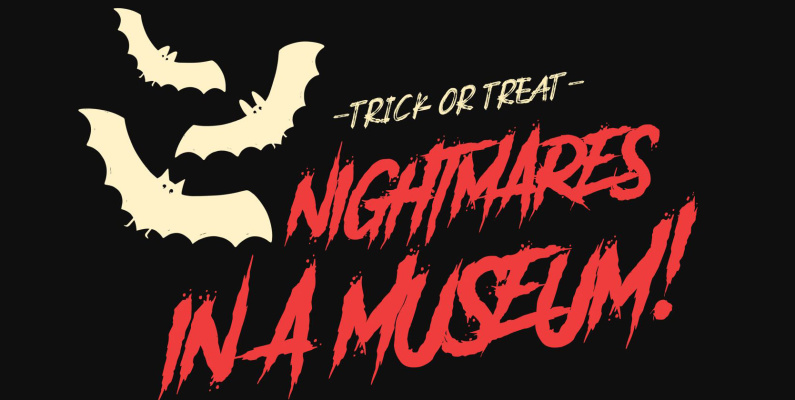
Our staff often get asked at Halloween what some of the scariest things in the museum are. Sure we have pickled specimens in jars, and skeletons in glass cases, but there are other things more horrific that raise the hairs on the back of museum staff’s neck or scream out loud in horror.
This Halloween, we’re expressing some of our museum staff’s nightmares - through the medium of horror movie posters.
Which would you be brave enough to watch?
Synopsis:
Death doesn’t stop this bug eat bug world. The only thing that stands in the way of collection annihilation are our IMP (Integrated Pest Management) heroes, as they battle against swarming infestations of dried-up flesh-eating dermestid beetles taking over the museum.
Who will survive the horror of ….

In Real Life: Dermestid beetles, also called carpet beetles, are a real problem for collection items. There are precautions in place and staff are constantly vigilant and monitoring to ensure the nightmare of infestations don’t invade our waking hours.
Synopsis:
A desperate parent approaches a guide in a busy museum and asks have they seen little Charlie? Witness the heart-pounding action as the intercom call goes out and you begin to wonder.
Will they find the…

In Real Life: Families are encouraged to stick together in the museum, and supervise their kiddos. But during the school holidays the museum can be very busy so lost kids (and lost parents) do happen. Our front of house staff are heroes, and are well trained and experienced in reuniting people.
Synopsis:
In a world of light and dark, sometimes it’s hard to see. Endure the mental conundrum of collections being most comfortable in the dark but struggling never to feel seen by the people who most need them. When things are bought to light, it all fades away in the end.
Can you endure…

In Real Life: Historically museums, like Otago Museum were lit by natural light, but over time this has left a legacy of items fading. You’ll see some of the faded survivors in Animal Attic. These days, it means that we use a lot of tools to limit exposure so you may notice changes; reducing or preventing natural light in the gallery windows, installing new LED in others. Sometimes items are lit lower. We also change light sensitive display items regularly so that they get “rested” in the dark. Issues surrounding damage from overexposure versus the importance of visibility of objects on display are constantly being considered in exhibition-related decisions.
Synopsis:
An edgy psychological thriller follows a young collection officer who begins to worry they’re going insane. Everything in the museum seems to stay put, except trolleys. No one else seems to understand them, they’re just a trolley… Whatever could they mean?
But they swear …

In Real Life: This is just a bit of fun, but moving things around a large multi-level building like the museum can be a challenge. Each department gets pretty protective of their gear (in museums this is especially true of trolleys). Like most workplaces, it’s important that you can rely on the tools you need to do your job being put back where they live. Otherwise it can spell bloody murder!
Synopsis:
They only needed the hot glue gun and a swing tag, but as they hunt through the swaths of Mylar, ether foam and Tyvek, something stirs.
It suddenly becomes clear that the Collection Manager is not …

In Real Life: Museum collections use all sorts of large sheets of plastics, foams and boxes (some literally referred to as coffin boxes). These are all used to carefully pack collections for loan and storage. The packing room is where all these very practical materials live.
It’s probably just me, but packing rooms give me asphyxia heebie-jeebies
Happy Halloween, thanks for visiting our nightmares!
